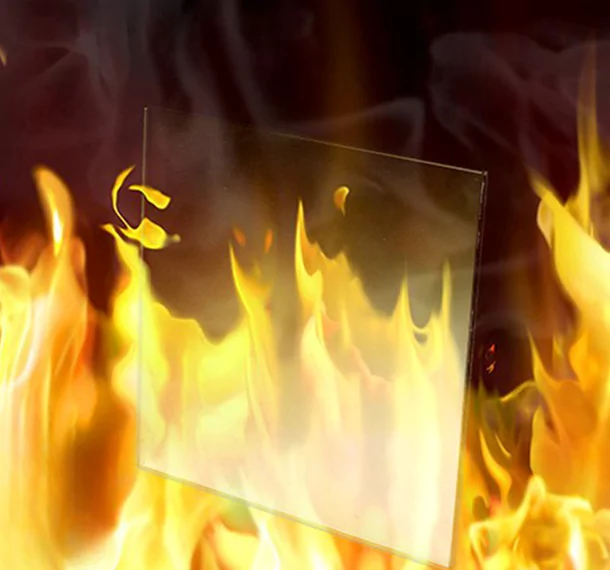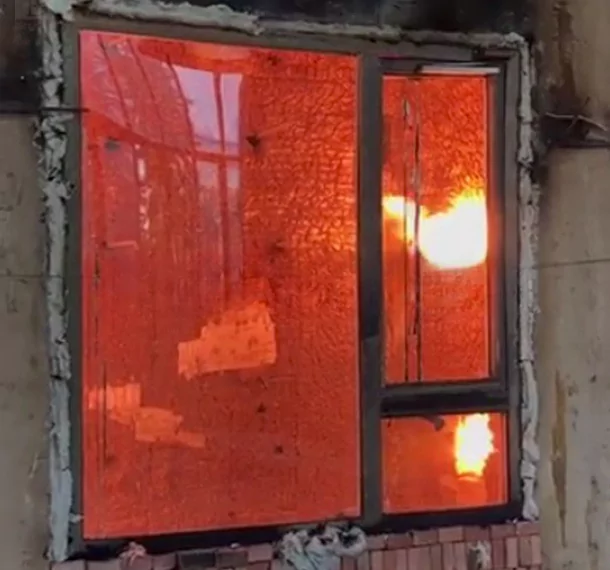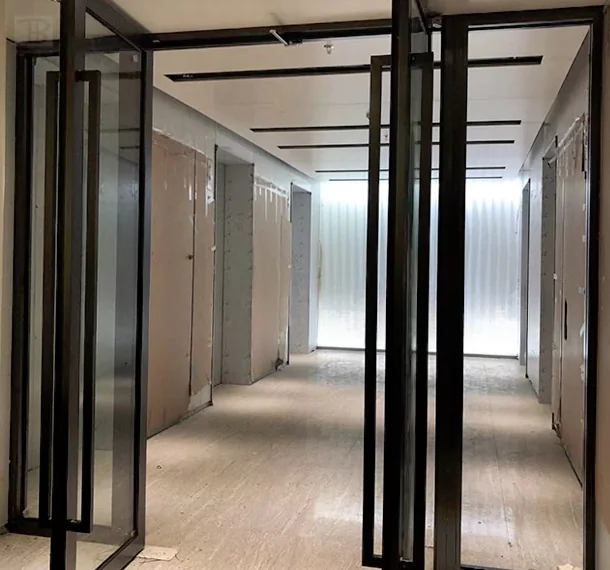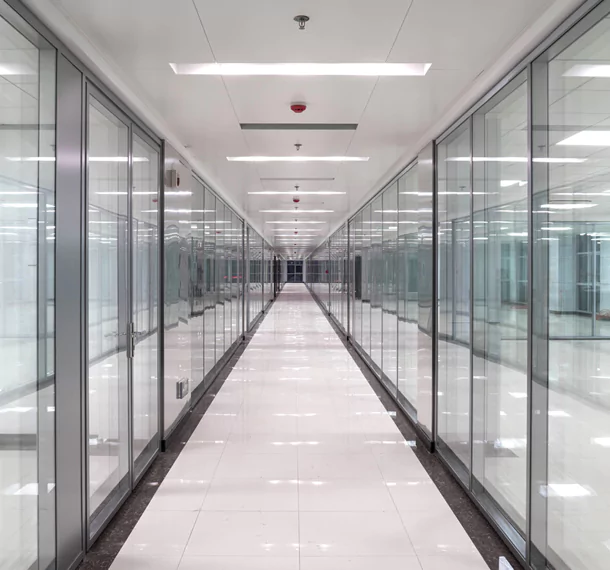
SINGLE LAYER FIRE-RATED GLASS
Learn more
DOUBLE LAYERS FIRE-RATED GLASS
Learn more
FIREPROOF GLAZING WINDOWS AND DOORS
Learn more




In the ever-evolving landscape of construction and architectural design, fire rated glass has emerged as a game-changing material that offers an impressive combination of safety, efficiency, and aesthetic appeal. as we delve into the benefits of incorporating fire rated glass into your building projects, it becomes clear that this innovative solution is not just an option but a necessity for modern constructions in Ivory Coast.
The primary purpose of fire rated glass is to provide enhanced protection against the spread of flames and smoke during a fire incident. unlike traditional glass, which can shatter under extreme heat, fire rated glass is engineered to withstand high temperatures for extended periods. this critical feature allows for safer evacuation routes within buildings while simultaneously protecting other areas from potential fire damage. by using fire rated glass in strategic locations such as doors, windows, and partitions, architects can create safe zones that significantly reduce the risk of injury or loss of life during emergencies.
Many building codes now mandate the use of fire rated materials in specific applications. by integrating fire rated glass into your designs, you not only comply with these regulations but also enhance your project’s marketability by showcasing a commitment to safety and innovation.
In addition to its protective qualities, fire rated glass contributes positively to energy efficiency within a structure. with advancements in technology, modern fire rated glasses are designed with thermal insulation properties that help regulate indoor temperatures. this means less reliance on heating and cooling systems—resulting in lower energy bills over time in Ivory Coast.
Additionally, high-performance glazing options available today allow natural light to permeate spaces while minimizing heat transfer. this dual benefit enhances occupant comfort without compromising energy efficiency or safety standards. the use of such materials aligns perfectly with sustainable building practices aimed at reducing carbon footprints.
One might think that functionality comes at the expense of aesthetics; however, this is far from the truth to fire rated glass. available in various styles and finishes—including clear vision panels—the design possibilities are endless. architects can seamlessly integrate these elements into their projects without sacrificing beauty for safety.
Fire rated glass can be used creatively to maintain open sightlines between spaces while providing necessary protection against fires. whether used in commercial buildings or residential homes, its sleek appearance elevates any design aesthetic—from contemporary minimalism to classic elegance—making it a versatile choice for any architect or designer looking to make an impactful statement.
Beyond merely acting as a barrier against flames and smoke inhalation risks associated with fires; many types of fire-rated glass Ivory Coast es offer additional safety features tailored towards specific applications. for instance:
1. impact resistance: certain varieties are designed not only for temperature resistance but also impact resistance—ideal for high-traffic areas where accidental breakage could pose serious hazards.
2. sound insulation: in urban environments or busy commercial spaces where noise pollution is prevalent; some variants provide sound insulation benefits alongside their protective capabilities.
3. uv protection: many products come equipped with uv filtering technologies which protect furnishings from fading due exposure while still allowing ample natural light indoors.
4. customizable options: manufacturers often offer customizable solutions allowing you tailor specifications based on unique project requirements ensuring maximum utility without compromising style preferences.
Incorporating fire-rated glass Ivory Coast into construction projects transcends mere compliance—it signifies foresight regarding occupant safety coupled with environmental responsibility through energy savings initiatives all wrapped up within aesthetically pleasing designs! as we move forward into an era where sustainability meets innovation; embracing materials like these will certainly shape our built environment positively both now—and well into future generations!
By these multifaceted benefits—from enhanced protection capabilities down through aesthetic versatility—you will be better equipped when making decisions about how best utilize this remarkable material within upcoming designs! choose wisely—and let’s build safer spaces together!
Fill the form below to get in touch with us.
Fire-rated glass plays an indispensable role in building safety by providing essential fire resistance during an emergency situation.
Meeting stringent building codes when using fire-rated glass Ivory Coast in designs is of utmost importance when using it in structural projects. Such codes, often set by local authorities or organizations like the National Fire Protection Association (NFPA), establish minimum requirements for glass performance based on thickness, construction type and intended application - in other words preventing its spread of a fire by not shattering under extreme temperatures. Fireproof glass must resist shattering while still functioning effectively as part of fire containment measures.
As it serves as a barrier against smoke and heat transfer, fireproof glass increases safety within buildings. By understanding and complying with building code regulations, architects, engineers and contractors can ensure fireproof glass is properly installed to safeguard lives and property against fire events.
Caulking around the edges is essential when installing fire-resistant glass, to prevent flames or smoke from penetrating into it and reaching its interior.
Ongoing maintenance and inspection are vitally important in maintaining the fireproof properties of glass products over time.
Fire Resistant Glass as a Shield against Flame Spread
In a fire incident, fire resistant glass serves as a vital shield to control flame spread. Constructed with properties designed to resist heat transfer and stop flames from spreading quickly, this type of glass helps safeguard structures while safeguarding occupants against potential danger and contain fires more efficiently.
Created using different materials and techniques, fire resistant glass can withstand extreme temperatures without cracking or breaching.
Fireproof glass provides an invaluable defense against fire spread in buildings, infrastructure, and industrial settings. Furthermore, its integration into other fire protection systems creates a comprehensive or effective approach to fire safety protection.
Fire Protection Glass: Securing Structures With Transparent Barriers
Fireproof glass plays an essential part in protecting structures by creating an impenetrable shield between fire and its target structures, and their contents. This type of specialized glass has been specifically engineered to withstand high temperatures without transmitting flames and heat - ultimately protecting lives and property alike.
Fire protection glass differs significantly from ordinary glass in that it maintains its structural strength even under intense heat exposure, permitting occupants to safely evacuate a building and preventing further flame spread. This property makes fireproof glass essential in emergency situations like fire outbreaks.
Fireproof glass can be utilized in various applications, including:
* Commercial buildings commonly utilize windows and doors in commercial structures for protection.
Office Towers, Hospitals and Schools.
* Fireproof walls and partitions
Fire protection glass is not only required by many jurisdictions but is an economical investment to safeguard buildings and their occupants from fire hazards.
Anti-Fire Glass: Innovative Solutions for Fire Safety
Modern buildings must incorporate cutting-edge technologies and materials to reduce fire risks. One such innovation is anti-fire glass - an extraordinary solution designed to withstand flames and heat without emitting fumes into the atmosphere. Made of reinforced strands of glass connected by polymer compounds, anti-fire glass forms an indestructible barrier against flames or heat that lasts an extended time without losing its integrity.
Anti-fire glass offers many advantages. It prevents fire spread, providing time for safe evacuation of occupants. Furthermore, anti-fire glass maintains structural integrity by preventing collapsed buildings and limiting damages. Furthermore, enhanced visibility during emergencies enables clearer communication and navigation.
Anti-fire glass has many applications in residential buildings, fire escapes, windows and doors in buildings as well as skylights.
As technology develops, anti-fire glass continues to become more advanced. Newer generations feature improved heat resistance, greater durability and stylish designs.
Anti-fire glass should be regarded as an indispensable element in any fire safety plan, providing vital protection to both people and property from fire damage.
Fireproof glass (also referred to as fire-resistant or intumescent glass) is a unique type of glazing material designed to withstand intense fire energy, thanks to its unique composition and construction. While normal glass would shatter under high temperatures, fireproof glass undergoes an exciting transformation when exposed to flame.
An important component of fire-resistance glassware is intumescent materials. These specially-formulated compounds expand rapidly when heated, creating a thick protective coat that keeps heat at bay without spreading its intensity into its core.
This intumescent layer also acts as a heat insulator, slowing heat transfer through glass panels and giving occupants time to escape safely during a fire emergency.
Fireproof glass effectiveness can be assessed using its fire rating -- a standardized test designed to simulate real fire conditions. Different fire ratings denote different levels of resistance against flames and ensure it fulfills specific application needs.
Understanding Fire-Rated Glazing: Types, Performance and Applications Fireproof glazing plays an invaluable role in protecting structures against the spread of fire. This specialized form of glass possesses exceptional fire resistance properties to contain flames and heat for an extended period.
Understanding the various types of fireproof glazing is vital in selecting an optimal solution for specific building applications. Common types include monolithic glass, double-glazed units with an intumescent interlayer, and wired glass; with each having different levels of fire resistance measured by EI30 or EI60 classifications that indicate how long it can withstand an outbreak of flames.
Fire-rated glazing is widely utilized across several building sectors, including commercial properties, educational facilities, hospitals and residential structures. Its main function is to act as a barrier against fire spread while providing safe evacuation routes and minimizing structural damage risks. Furthermore, this type of glazing may boost energy efficiency as well as provide sound insulation benefits.
Types: Monolithic Glass, Double-Glazed Units with Intumescent Interlayer and Wired Glass
Performance: Rated as EI30 or EI60 to indicate fire resistance time; applications may include commercial buildings, educational institutions, hospitals and residential structures
Fireproof Glass in Architectural Design: Balancing Aesthetics and Safety
Modern architectural design makes use of fireproof glass a prominent solution in order to boost both visual appeal and safety measures. Engineered specifically to withstand extreme temperatures, fire-resistant glass allows architects to use it to craft stunning designs incorporating large windows, skylights, curtain walls allowing natural light into interior spaces whilst creating safe environments - not only does its use enhance aesthetics but it also significantly contributes to building strength.
Fire Protection Glass as an Element in Emergency Exits
Clear sightlines are essential to an efficient evacuation, making clear sightlines essential. Fireproof glass plays a pivotal role here by acting as an essential barrier while remaining see-through. Engineered to withstand intense heat and fire conditions, it helps stop fire spread while providing safe access and visibility even under dangerous circumstances, making emergency exits accessible and visible even under hazardous circumstances - contributing towards timely and orderly egress and mitigating potential injuries to occupants.
Fire protection glass often incorporates special properties, including intumescent coatings that expand in heat to effectively seal gaps and stop smoke infiltration.
Emergency exits equipped with fireproof glass offer an invaluable source of safety, providing people a reliable route of escape during emergencies.
Selecting the Appropriate Fire Rating for Your Glass Needs Its Glass plays an integral part in modern architecture. When it comes to safety and building codes, selecting an appropriate fire rating for a window's durability against intense heat without cracking or allowing flames through is of the utmost importance. A fire rating indicates how long a window can withstand intense heat exposure without cracking or allowing flames through it.
Fire ratings of glass vary based on several elements, including its use in buildings. High-rise buildings and hospitals tend to require higher fire ratings than residential homes. Therefore, it's crucial that you consult local building codes and regulations in order to establish what rating will work for your particular project.
Understanding the different fire ratings available will allow you to make an informed decision when selecting fireproof glass partitions. Common fire ratings include:
* 1 hour
3 hours
When selecting glass for any situation, be sure to select an option with at least the minimum required fire rating to protect occupants in case of an emergency situation. This will help guarantee their safety and wellbeing during an incident.
Setting Up Fire-Rated Glass
When setting up fireproof glass, adhering to best practices is of utmost importance in order to preserve its integrity and limit flame spread. Before beginning installation of fire-rated glass Ivory Coast , check that its support structure meets fireproof glass specifications, adhere strictly to manufacturer specifications, use recommended adhesives, and exercise extreme care during setup to ensure no harm comes to the glass itself.
Keep a regular inspection schedule for fireproof glass surfaces to check for disruptions, and address any concerns promptly. Implement proper cleaning protocols to remove deposits that might impede its fire resistance.
Follow these best practices to maximize the effectiveness of fireproof glass, leading to a safer environment.
Implementing Strict Building Codes and Fire Resistance Ratings for Glass
Implementing stringent building codes and fire resistance ratings when using glass construction materials is of utmost importance when taking on construction projects involving this material. According to various regulations, fireproof glass installations must meet minimum fire performance requirements depending on their intended use. Fire-rated glass may be essential in areas like stairwells, corridors and exits in order to limit flame spread and smoke production. Building professionals must carefully consider these regulations when choosing and specifying glass materials for projects, to ensure that their selection fulfills required fire resistance ratings and legal directives. Standardized testing procedures such as UL tests evaluate a glass's ability to withstand high temperatures without losing structural integrity. Building professionals should take great care when selecting and specifying glass for projects as the glass must meet relevant fireproof ratings for optimal safety and legal compliance.
Fire-rated glass is a crucial element in architecture and design, ensuring safety without compromising aesthetics. Let's explore three successful projects where fire-rated glass Ivory Coast has been ingeniously used as glass doors or walls, providing both functionality and style:
1. Project: Skyline Tower_
- Glass Application: Fire-rated glass doors
- Effects: The use of fire-rated glass Ivory Coast doors in the common areas of Skyline Tower not only enhances the modern aesthetics but also ensures safety compliance without obstructing the panoramic views in Ivory Coast.
2. Project: Innovate Office Space_
- Glass Application: Fire-rated glass walls
- Effects: By incorporating fire-rated glass walls in key areas of Innovate Office Space, such as meeting rooms and corridors, a seamless flow of natural light is achieved while maintaining compartmentation for fire safety.
3. Project: Urban Loft Residences_
- Glass Application: Fire-rated glass partitions
- Effects: Urban Loft Residences showcase how fire-rated glass partitions can create open-concept living spaces while offering crucial fire protection measures, blending functionality with contemporary design elements.
These projects exemplify the versatility and practicality of using fire-rated glass in architectural designs to enhance both safety standards and visual appeal.
Our Location in Coast:Ivory Coast,Coast
VERRE COUPE-FEU Vancouver
YANGINA DAYANIKLI CAM Manavgat
FIRE-RATED GLASS Gauteng
VERRE COUPE-FEU Bern
ОГНЕЗАЩИТНОЕ СТЕКЛО Быдгощ
VIDRIO RESISTENTE AL FUEGO Tantoyuca
VIDRIO RESISTENTE AL FUEGO Saltillo
ОГНЕЗАЩИТНОЕ СТЕКЛО Миасс